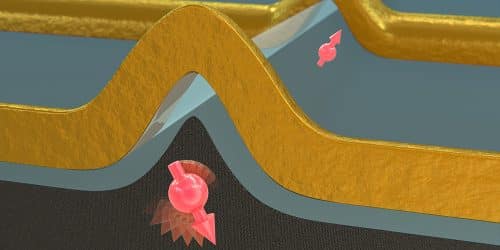A qubit or quantum bit is the basic unit of quantum information in a quantum computing system. The research team led by Dr Andreas Kuhlmann and Professor Dominik Zumbühl from the University of Basel has now come up with silicon-based qubits that are very similar in design to classic silicon transistors. This breakthrough might solve a long standing problem of scalability – prototypes of quantum computers made so far have been based on just a handful of computing units. What the industry requires is a large number of qubits.
The solution to the scalability problem with traditional computers was silicon chips, which now contain billions of “fin field-effect transistors” (FinFETs). These FinFETs are small enough for quantum applications – a single electron with a negative charge or a “hole” with a positive charge can serve as a spin qubit at very low temperatures near absolute zero (0 Kelvin or -273.15 degrees Celsius).
The qubits developed by Kuhlmann’s team are based on FinFET architecture and use holes as spin qubits. In contrast with electron spin, hole spin in silicon nanostructures can be directly manipulated with fast electrical signals.

Temperature is another important barrier to scalability. Earlier qubit systems had to operate at temperatures as low as 0.1 Kelvin. Additional measuring lines connect the control electronics at room temperature to the qubits in the cryostat (a cooling equipment that generates extremely low temperatures) to regulate each qubit. Because each line generates heat, the number of these measuring lines is restricted. This invariably results in a bottleneck in the wiring, putting a cap on scaling.
“However, integrating these electronics requires qubit operation at temperatures above 1 Kelvin, with the cooling power of the cryostats increasing sharply to compensate for the heat dissipation of the control electronics,” explains Dr. Leon Camenzind of the Department of Physics at the University of Basel. Doctoral student Simon Geyer, who shares lead authorship of the study with Camenzind, adds, “We have overcome the 4 kelvin-mark with our qubits, reaching the boiling point of liquid helium. Here we can achieve much greater cooling power, which allows for integration of state-of-the-art cryogenic control technology.”
Working with proven technology such as FinFET architecture to build a quantum computer offers the potential for scaling up to very large numbers of qubits. “Our approach of building on existing silicon technology puts us close to industry practice,” says Kuhlmann.
The entire study has been published in Nature Electronics, and can be found here.






